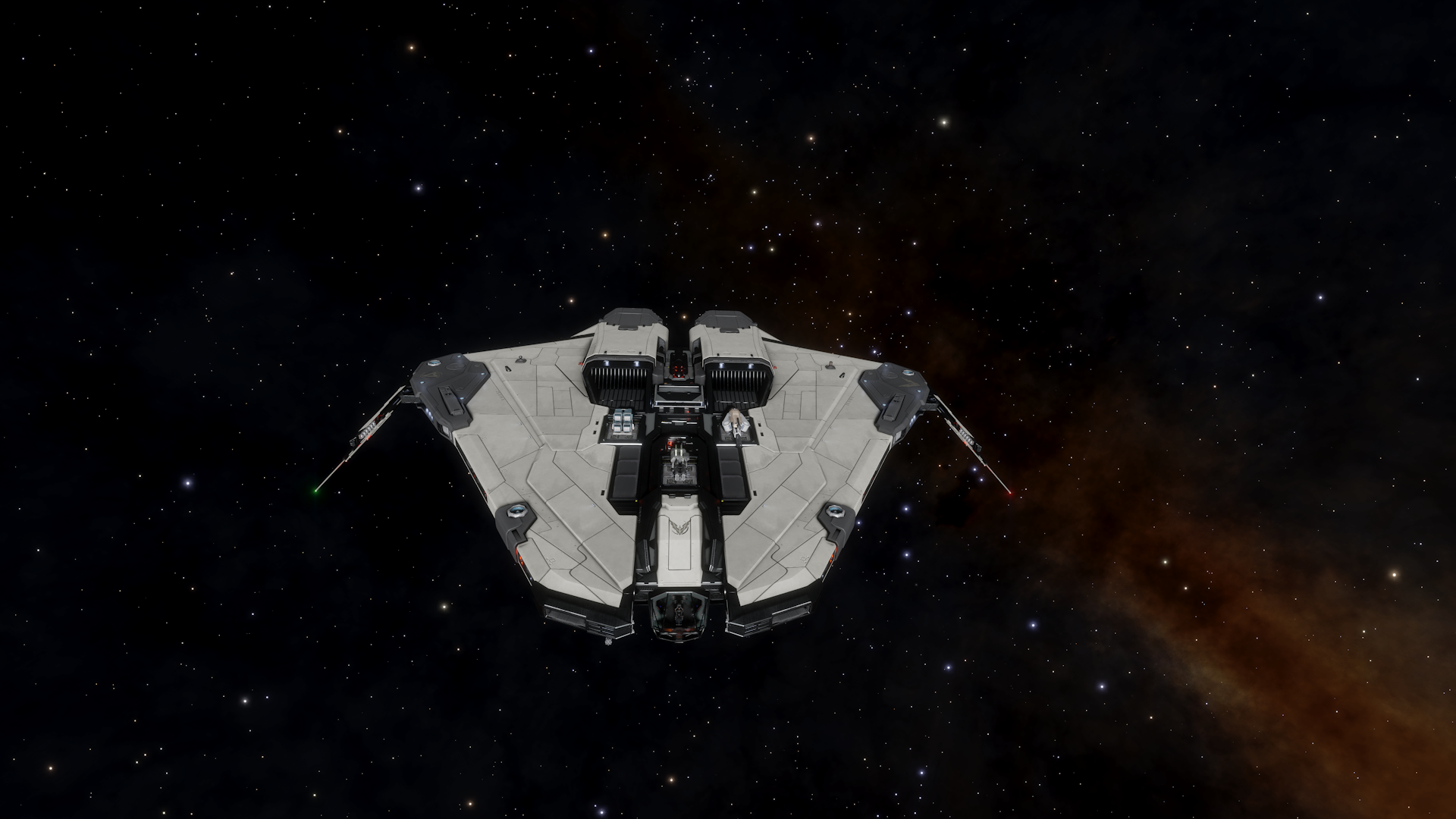Ship Build Purpose
Build Description
I bought the Krait Mk 2 for bounty hunting. At first I had it incorrectly equipped and I wasn’t doing enough damage to the hull. As time went by, I improved it and I can see almost no problems with the choice of modules (you can also change some of them to make it completely polyvalent, I’ll detail that below).
After engineering and fine-tuning, it became my best fighting ship. Here are my weapon groups:
A:
– Laser beam and burst laser in 1
– 2 multi- cannons in 2
B:
– Wake detector and kill warrant scanner in 1
C:
– 2 multi- cannons in 2
– Missiles in 1
(surface scanner in A1, discovery detector in A2, data link and composition detector in B1)
Put the hard points in this order:
Laser beam, Missiles, Multi-cannons, Multi-cannons, Burst laser
My combat method with this ship is :
– Group B: Deploy the fighters (Rogue F and Gelid F, but this is a personal choice) and scan the targets.
– Group A: Destroy shields with lasers, destroy modules with everything.
– Group C: If lasers are damaged, if the target is escaping or if lasers are ineffective, kinetic and explosive weapons are the most effective.
Another possible configuration for greater polyvalence and materials:
Replace the class 3 module reinforcement with a class 2 SRV hangar, replace the class 4 module reinforcement with a class 3 multi-drone operation controller, replace the class 5 energy cell with a class 5 cargo.
Pros and Cons
Advantages :
– Good agility
– Very good damage to shields and hulls
– Has 2 fighters
Drawbacks:
– The hull could have been more resistant (but it is possible to use a different hull if you wish).
Materials Required
The following numbers assume the following rolls required to progress:
Grade 1 rolls - 2
Grade 2 rolls - 4
Grade 3 rolls - 5
Grade 4 rolls - 7
Grade 5 rolls - 10
This can vary greatly since rolls are randomized events, which means these are at best estimates to target.
Sulphur: 14
Conductive Components: 17
Specialised Legacy Firmware: 9
Unexpected Emission Data: 20
Conductive Ceramics: 22
Decoded Emission Data: 14
Modified Consumer Firmware: 7
Abnormal Compact Emissions Data: 20
Tin: 10
Anomalous Bulk Scan Data: 5
Hybrid Capacitors: 14
Selenium: 12
Unidentified Scan Archives: 7
Electrochemical Arrays: 14
Cadmium: 17
Classified Scan Databanks: 10
Polymer Capacitors: 27
Tellurium: 10
Atypical Disrupted Wake Echoes: 6
Chemical Processors: 9
Phosphorus: 27
Strange Wake Solutions: 5
Chemical Distillery: 7
Eccentric Hyperspace Trajectories: 7
Manganese: 21
Arsenic: 30
Chemical Manipulators: 10
Datamined Wake Exceptions: 10
Iron: 22
Germanium: 14
Niobium: 24
Heat Dispersion Plate: 4
Chromium: 10
Exceptional Scrambled Emission Data: 5
Heat Exchangers: 5
Heat Vanes: 7
Irregular Emission Data: 7
Proto Heat Radiators: 10
Nickel: 33
Shield Emitters: 27
Tungsten: 36
Molybdenum: 51
Zinc: 21
High Density Composites: 30
Technetium: 30
Flawed Focus Crystals: 18
Open Symmetric Keys: 10
Atypical Encryption Archives: 14
Focus Crystals: 21
Adaptive Encryptors Capture: 20
Refined Focus Crystals: 30
Military Supercapacitors: 10
Mechanical Scrap: 4
Vanadium: 4

